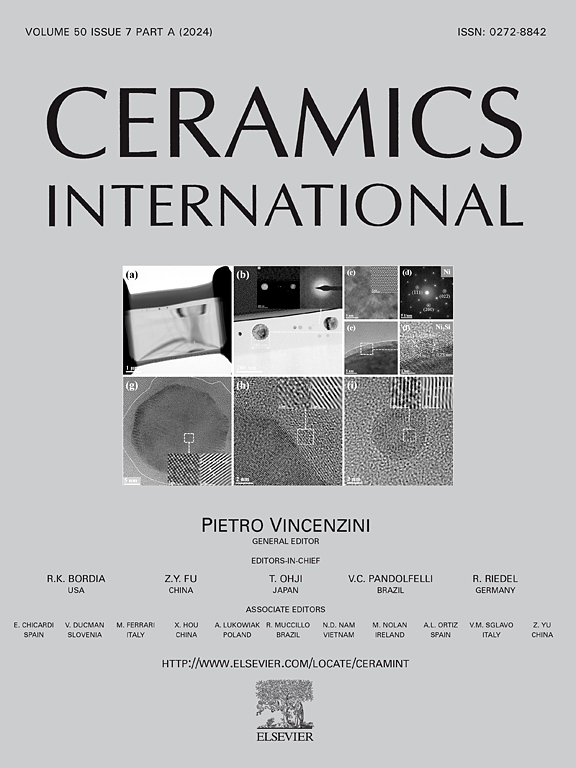An Innovative Laser Decal transfer of ZnO Ceramic in LIG for advanced Hybrid Nanogenerator applications
IF 5.1
2区 材料科学
Q1 MATERIALS SCIENCE, CERAMICS
引用次数: 0
Abstract
This study is focused on utilizing laser technology as a versatile energy source in device fabrication for energy harvesting applications. Dual utilization of CO2 laser is employed for graphene synthesis and selective deposition of ZnO piezo ceramic by laser μ-3D printing. A Piezo-Tribo hybrid nanogenerator is fabricated through selectively transferring ZnO ceramic onto porous laser-induced graphene followed by hydrothermal growth. The Laser decal transfer successfully yields uniform ZnO within porous graphene, facilitating the consistent growth of nanorods in pores. A FEP-ZnO-LIG device is fashioned, synergizing tribo-electricity from FEP-LIG and piezo-electricity due to the presence of ZnO, focusing on energy harvesting to consistently power sensors. ZnO piezo device demonstrates the least voltage and current output (9 V and 270 nA), while the FEP-LIG pair exhibits a higher output of 36 V voltage and 410 nA current. The combination of piezoelectric and electrostatic charge transfer mechanisms in a cascading fashion produces enhanced output voltage (75 V) and current (1.06 μA) compared to individual sum of piezo and tribo pairs. This enhanced performance is possibly attributed to synergistic interaction between ZnO nanostructures and graphene, enhancing charge flow during continuous contact and separation. This technique extends beyond its application for fine-tuning of functional performance in device fabrication.

求助全文
约1分钟内获得全文
求助全文
来源期刊

Ceramics International
工程技术-材料科学:硅酸盐
CiteScore
9.40
自引率
15.40%
发文量
4558
审稿时长
25 days
期刊介绍:
Ceramics International covers the science of advanced ceramic materials. The journal encourages contributions that demonstrate how an understanding of the basic chemical and physical phenomena may direct materials design and stimulate ideas for new or improved processing techniques, in order to obtain materials with desired structural features and properties.
Ceramics International covers oxide and non-oxide ceramics, functional glasses, glass ceramics, amorphous inorganic non-metallic materials (and their combinations with metal and organic materials), in the form of particulates, dense or porous bodies, thin/thick films and laminated, graded and composite structures. Process related topics such as ceramic-ceramic joints or joining ceramics with dissimilar materials, as well as surface finishing and conditioning are also covered. Besides traditional processing techniques, manufacturing routes of interest include innovative procedures benefiting from externally applied stresses, electromagnetic fields and energetic beams, as well as top-down and self-assembly nanotechnology approaches. In addition, the journal welcomes submissions on bio-inspired and bio-enabled materials designs, experimentally validated multi scale modelling and simulation for materials design, and the use of the most advanced chemical and physical characterization techniques of structure, properties and behaviour.
Technologically relevant low-dimensional systems are a particular focus of Ceramics International. These include 0, 1 and 2-D nanomaterials (also covering CNTs, graphene and related materials, and diamond-like carbons), their nanocomposites, as well as nano-hybrids and hierarchical multifunctional nanostructures that might integrate molecular, biological and electronic components.
 求助内容:
求助内容: 应助结果提醒方式:
应助结果提醒方式:


